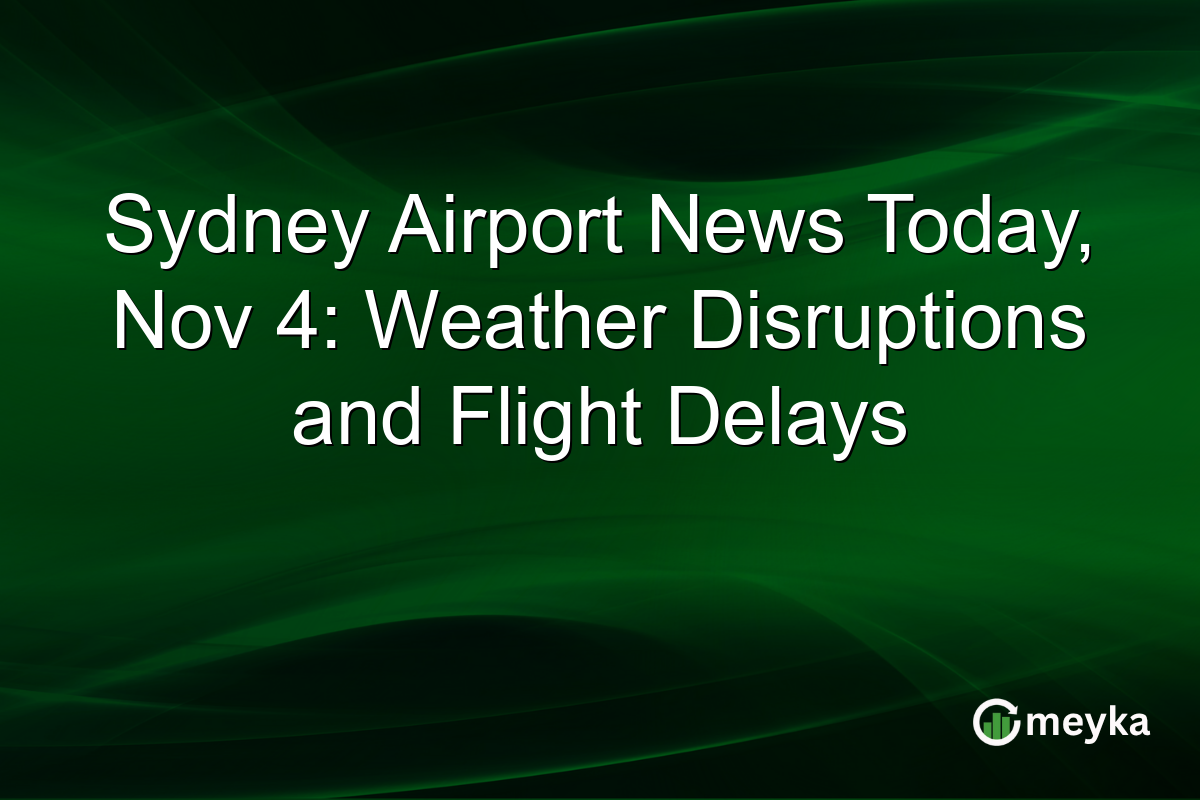Sydney Airport News Today, Nov 4: Weather Disruptions and Flight Delays
Severe weather in Sydney has led to significant disruptions at Sydney Airport, heightening concerns over flight operations and passenger safety. On November 4th, a substantial storm system affected the area, resulting in multiple flight delays and cancellations at one of Australia’s busiest airports. This situation has sparked discussions about the airport’s preparedness and infrastructure resilience under such adverse conditions.
The Impact of Severe Weather on Sydney Airport
The recent storm in Sydney has heavily impacted flight operations at Sydney Airport. On November 4th, intense storm activity caused widespread disruptions, with over 150 flights delayed and 35 cancellations reported. This situation underscores the vulnerability of airport operations to severe weather events. Such disruptions cause significant inconvenience to passengers and financial losses for airlines.
Read more on ABC News about the Sydney storm.
By understanding these disruptions, we can see the crucial need for enhanced weather forecasting and adaptable operational strategies at airports.
Safety Concerns and Operational Challenges
Severe weather not only affects schedules but also intensifies safety concerns. During the recent storm, parts of the terminal sustained damage, raising questions about structural resilience. This situation required emergency protocols to ensure the safety of passengers and staff.
For Sydney Airport, addressing these challenges involves reviewing current safety measures and reinforcing infrastructure where necessary. Ensuring operational continuity during adverse weather conditions is critical for maintaining service reliability and protecting customer trust.
Crisis Management and Future Preparedness
The disruptions caused by the Sydney storm highlight the importance of effective crisis management. Sydney Airport’s response included activating emergency management teams and deploying additional resources to manage passenger displacements. These efforts aim to minimize the impact of flight disruptions on operations.
Looking ahead, investing in advanced weather monitoring systems and updating emergency response plans are essential. Airports must prioritize resilience by incorporating flexible strategies that allow them to adapt quickly to unexpected weather challenges.
Final Thoughts
The severe weather that disrupted Sydney Airport operations on November 4th underscores the critical importance of preparedness and adaptability. While the immediate focus is on managing the aftermath and ensuring safety, long-term strategies must emphasize resilience and proactive crisis management. By bolstering infrastructure and enhancing operational protocols, airports can better withstand similar events in the future, ensuring improved safety and reliability for travelers. As these changes take place, stakeholders remain keenly interested in understanding Sydney Airport’s strategies for resilience and continuity.
FAQs
The recent disruptions at Sydney Airport were caused by severe weather conditions, including strong winds and heavy rainfall, which impacted flight operations on November 4th.
The storm led to over 150 flights being delayed and 35 cancellations. Parts of the terminal were also damaged, prompting concerns about operational safety and resilience.
Airports can invest in advanced weather forecasting systems and develop flexible operational strategies to adapt quickly to severe weather. Emergency response plans must be regularly reviewed and updated to ensure efficiency during such events.
Disclaimer:
The content shared by Meyka AI PTY LTD is solely for research and informational purposes. Meyka is not a financial advisory service, and the information provided should not be considered investment or trading advice.






